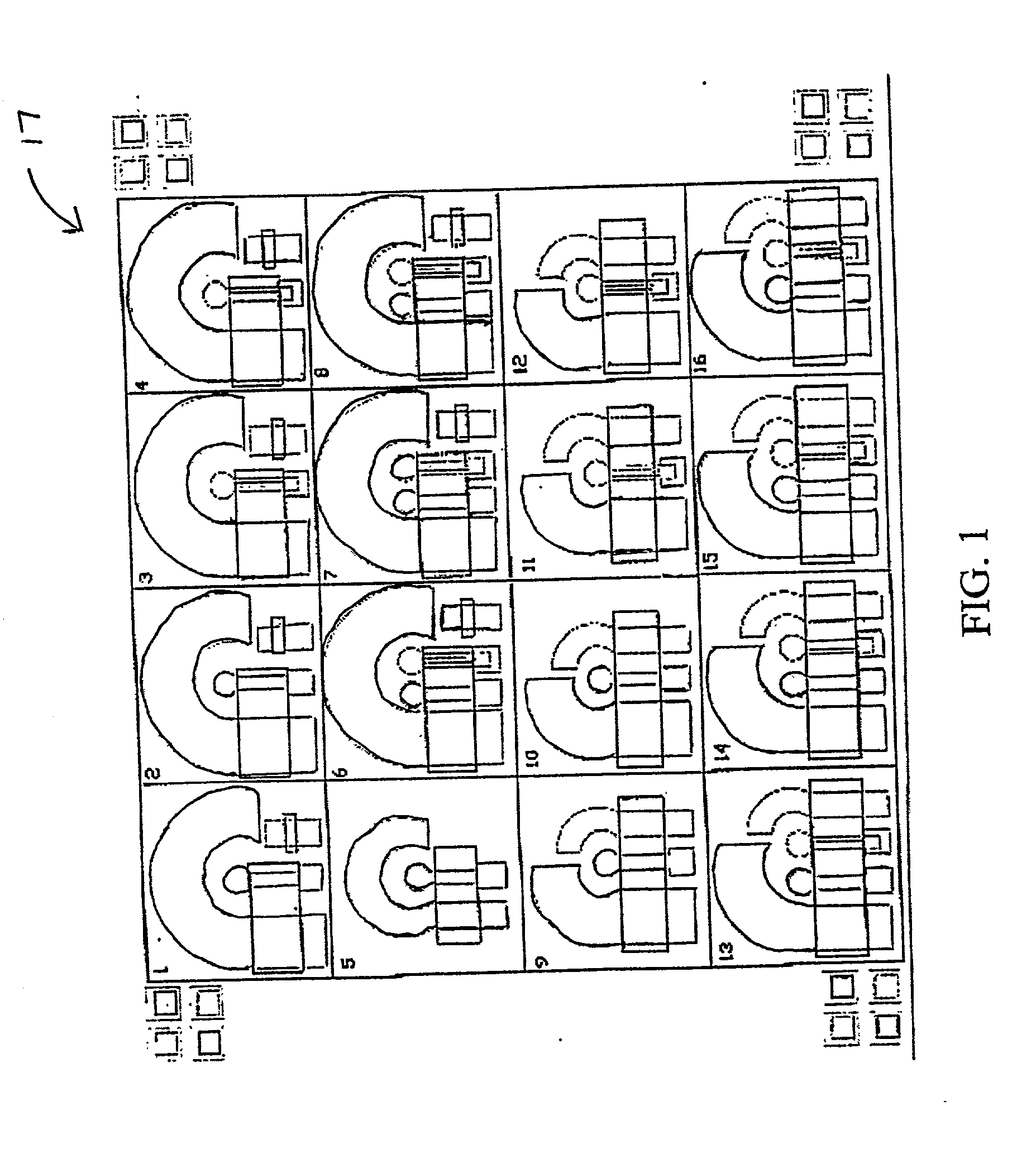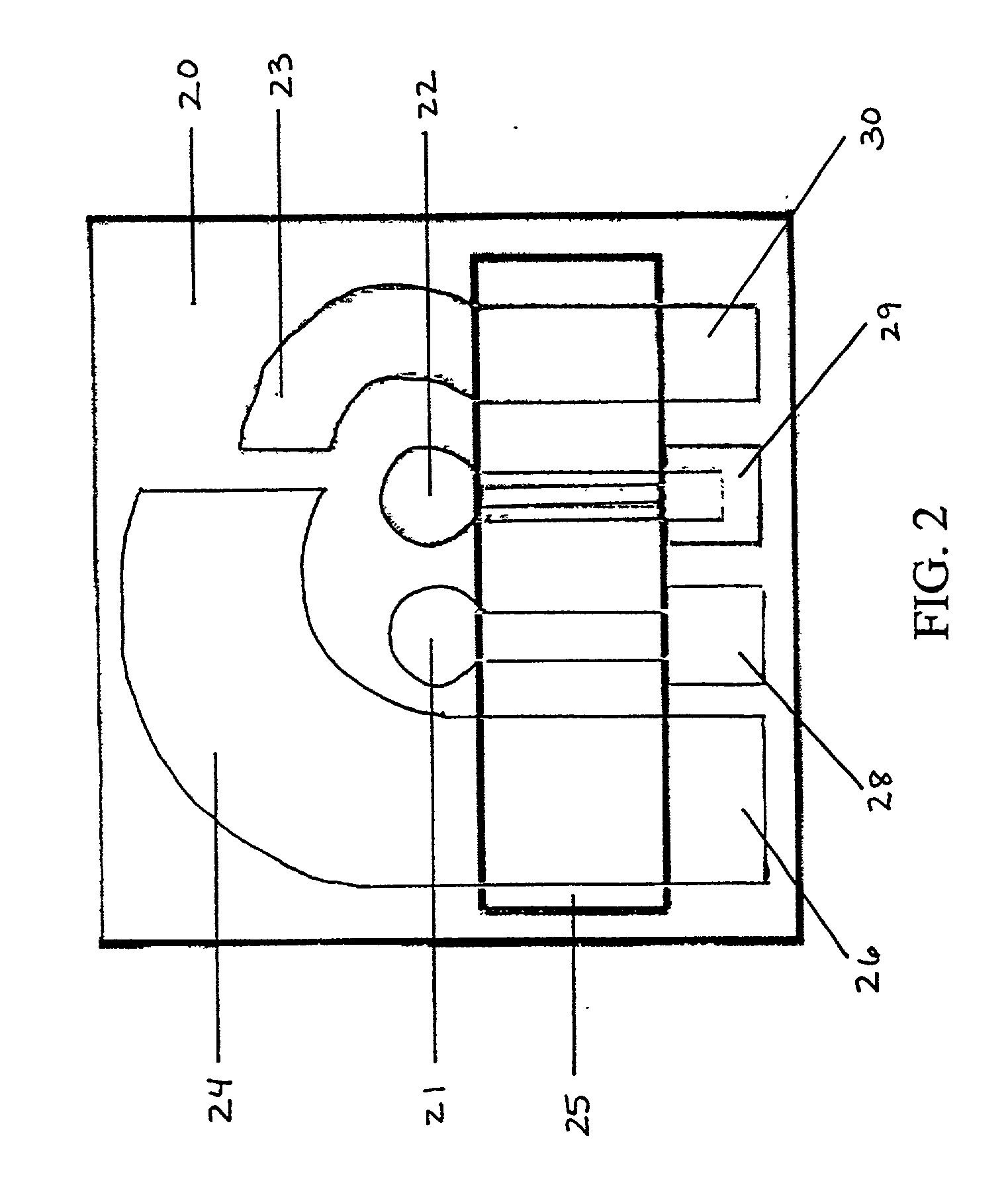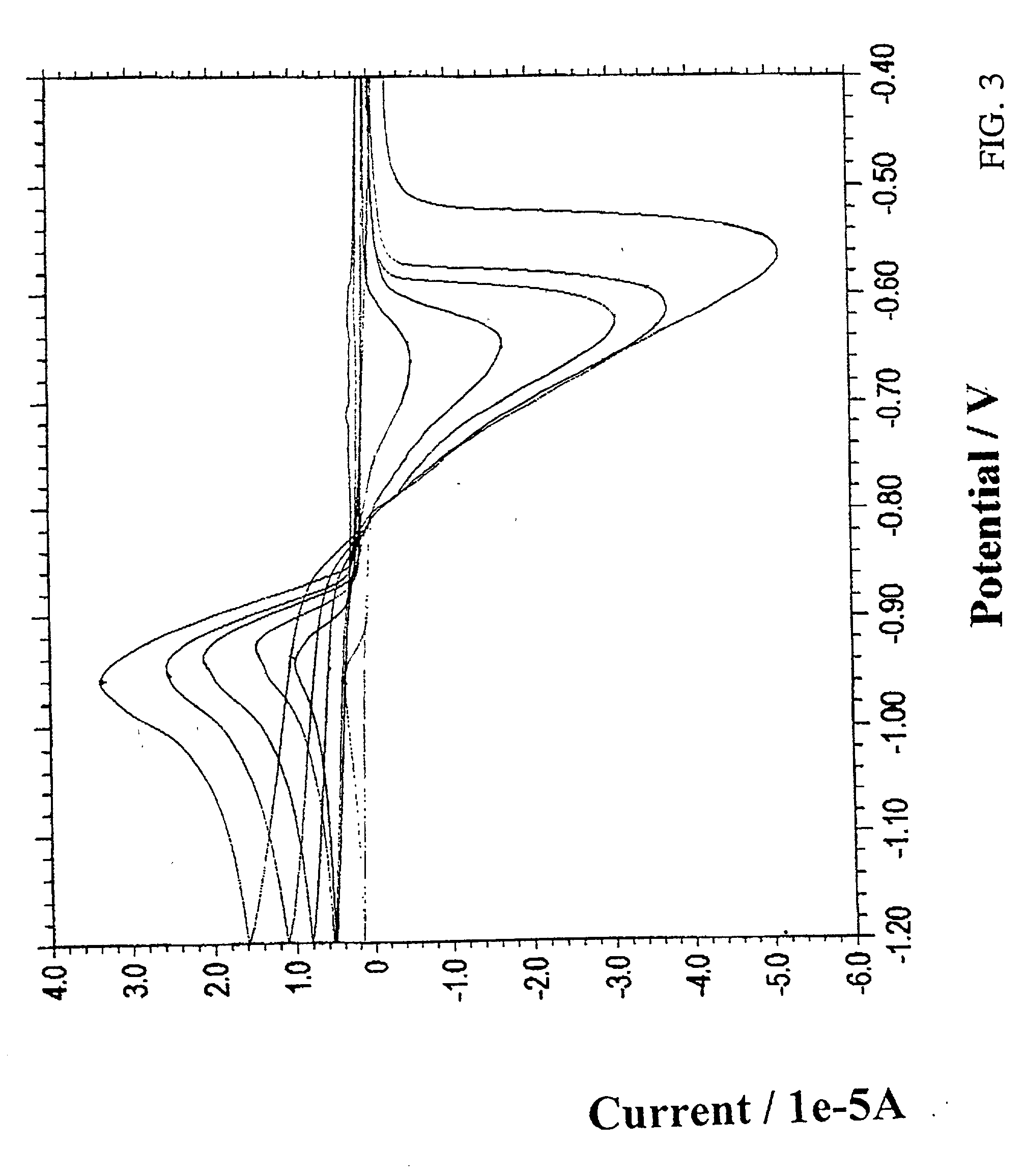Electrochemical sensor for detection and quantification of trace metal ions in water
a technology of electrochemical sensor and trace metal ions, which is applied in the direction of material electrochemical variables, liquid/fluent solid measurement, instruments, etc., can solve the problems of increasing the concentration of toxic species, strong influence of elemental toxicity throughout the remaining food chain, and increasing the problem of increasing the number of toxic species
- Summary
- Abstract
- Description
- Claims
- Application Information
AI Technical Summary
Benefits of technology
Problems solved by technology
Method used
Image
Examples
Embodiment Construction
[0050] FIG. 1 shows four of the sensor designs tested. The number in the upper left corner of each section is used to identify each individual chip. Chips 1 through 16 make up multi-chip device 17. Chips 1 through 4 are replicates of sensor example A. Chips 6 through 8 are replicates of sensor example B. Chips 9 through 12 are replicates of sensor example C. Chips 13 through 16 are replicates of sensor example D.
[0051] One preferred sensor design, sensor example D, is shown in enlarged form in FIG. 2. This sensor demonstrated superior performance for the detection and quantification of each trace metal ion tested, as discussed below. Four electrodes are arranged on a substrate 20. The shape of the sensing portion of the electrodes in sensor example D in the plan view is such that the edges are substantially rounded, that is, sharp edges are avoided. The working electrodes 21, 22 are placed in between the reference electrode 23 and the counter electrode 24. The counter electrode has ...
PUM
 Login to View More
Login to View More Abstract
Description
Claims
Application Information
 Login to View More
Login to View More - R&D
- Intellectual Property
- Life Sciences
- Materials
- Tech Scout
- Unparalleled Data Quality
- Higher Quality Content
- 60% Fewer Hallucinations
Browse by: Latest US Patents, China's latest patents, Technical Efficacy Thesaurus, Application Domain, Technology Topic, Popular Technical Reports.
© 2025 PatSnap. All rights reserved.Legal|Privacy policy|Modern Slavery Act Transparency Statement|Sitemap|About US| Contact US: help@patsnap.com



